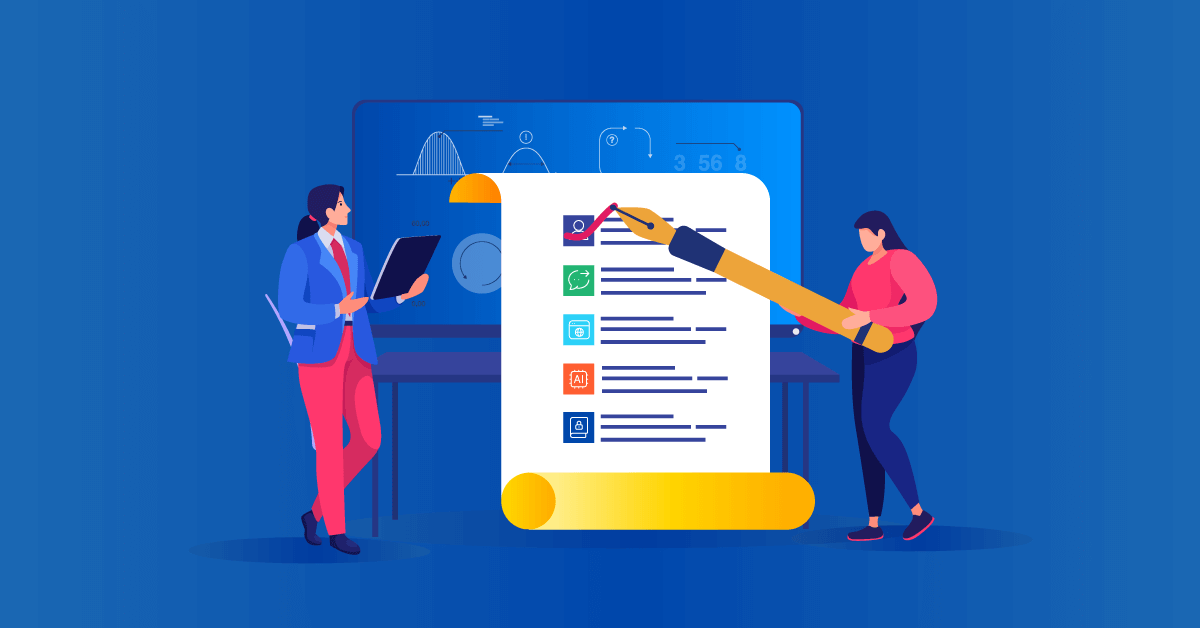Excellence in online teaching is not a permanent state – it is a condition that must be developed, nurtured, and sustained through proactive instructional strategies. At TalentLMS, we post a variety of progressive instructional strategy-related topics. We hope you are able to improve your training techniques and interact with your trainees better, and that these posts aid you in this endeavor.
But an eLearning course experience is never complete without an open-minded mentor who strives to change according to their learners’ needs. That’s why in this article we’ll demonstrate eight ways for you to achieve online course mentoring excellence.
Planning the course mentoring activities is crucial before the start of the eLearning training session. How will you provide individual and group feedback? Do you have a reflections journal? How will you support individual difficulties? Do you have a co-mentor? Many similar questions are planned in the few days before the course launch.
The goal is to mentor the current course better than the previous one.
Trainees and online learners have higher expectations from an eLearning program than ever before. They want their new course to be interesting and the information provided to be new to them. Learners usually begin a course with a positive attitude, as a new course means a fresh beginning for them.
They are also determined to do better than they did in their previous learning performances. The first few days of the course provide a wonderful opportunity for an instructor to engage the learners, connect them with each other and create an environment that is conducive to productive interactions.
One of the main challenges faced in online training is the pressure to satisfy line managers. Both the trainer and the line manager are working towards performance objectives for the trainees. The goal is to spend some cost and time with experts and senior peers to share practical knowledge that can be applied right after the training program.
For this purpose, trainers need to be in touch with line managers and experts to provide valuable feedback to trainees. Another common problem exists with learners who prefer to hide behind anonymity – the geographically dispersed learners who simply wish to complete the mandatory training program.
So, how do trainers provide equal engagement and participation for all trainees? Let’s work our way through these eight best practices to online course mentoring excellence.
8 Ways to Achieve Online Course Mentoring Excellence
Excellence is a continuous improvement act that effects every decision and action you make during your online teaching process.
It is not a one-time act, but a process of effective training habits, developed over time. The challenge is to have learners benefit from your excellence. A well-balanced approach takes into account the organization’s standards, the learner’s needs and your own accountability towards for teaching/training.
The following eight steps will enhance your approach towards excellence in online training:
1. Dealing with Difficult Trainees
Best practices indicate that when dealing with difficult trainees, the best way is not to try to improve a learner just in their educational capacity, but to transform them so that they become more cooperative. For example, if a learner contacts you and expresses themselves inappropriately, use this transforming opportunity to get to the heart of the matter.
Trainees are sometimes frustrated with their work-life balance or achieving their learning outcome, or any other number of possible reasons. Maintaining your emotional intelligence is the key to developing a receptive attitude towards difficult trainees. This enables you to turn an interaction into a potentially productive conversation. Also, a conversation over the phone is more time-effective than a series of email exchanges.
2. Getting to Know your Learners
Avoid thinking of your eLearning sessions as a mass group of students. Instead, aim for personalization: treat each student individually, get to know them on a one-to-one basis. Have them post an introduction passage in which they describe their goals, dreams and aspirations. Create a reflections log, in which you are able to write at least one descriptive word about each learner.
This will make your feedback and responses more individualized and personal. Learners will feel “heard” and will have more faith in your instructional strategies.
3. Productive Relationships
The development of positive relationships is the direct result of positive interactions. Positive interactions occur when learners see you as approachable and as available for assistance when they need it.
Any extra efforts in communicating with trainees will help them see your personality, and leave them with a positive impression. You can accomplish this through multiple forms of contact.
Convert your virtual connections into human-to-human interactions with your students by offering them help at all times.
4. Professional Communication
Only enter into a conversation from the perspective that will help you connect with the learner. Keep in mind that written communication can sometimes be misleading. The choice of words directly affects the tone of your message.
Try to begin any message with a positive word that gives a welcoming feeling. Think of different interpretations when sending a message to the learner. Use words that tell the learner that you are respectful, you are trying to help them and you are willing to provide specific details again (as opposed “see the agenda” statements). And always – always – follow up with learners who have unresolved issues.
5. Trainer Credibility
Credibility to train cannot be forced but, rather, it can only be demonstrated. In an eLearning environment, trainer credibility issues in the minds of the learners are even more important.
Credibility is developed through one learner-to-mentor interaction at a time. As a leader in an eLearning session, learners think of you as a guide, as an expert and as a fair individual. Trainer/mentor behaviors like maintaining rules and being fair, understanding their needs, and being flexible whenever possible or warranted, boost credibility.
It’s all about how learners perceive you. Are you approachable and available? Are you patient with persistent issues? Always remember, one negative interaction interrupts the series of positive interactions you have built with your learner.
6. High Expectations from Learners
Expecting high standards of excellence from yourself as a trainer and from your learners is equally important. This involves two major conducts that need to be adapted: being accountable for the quality of all work done in the eLearning session and establishing yourself as a role model/example for your learners.
At the beginning of the course, let your learners know that you expect them to provide substantive work, be willing to learn and maintain organizational learning standards of excellence. To accomplish this goal you must do more than facilitate a class and check off each requirement – you must also be open to following those same guidelines.
But also, in order to achieve this goal, you as a trainer or course mentor should be able to accept constructive feedback from evaluations and adapt your strategies accordingly.
7. Proactive Practices
Excellent course mentoring and facilitation is all about observing learning behavior and deciding when to intervene and how much. In your eLearning sessions, you may have a learner who is falling off the radar, not participating in discussions, and/or not be completing their assignments.
The best approach for this type of learner is to maintain contact attempts until they respond in some manner. This shows them that they are valued and you want to assist them. The idea behind this outreach is to get them back on track.
8. A Support Structure
Your aim is to train learners towards establishing lifelong learning habits and ultimately creating a learning organization. Describe how learning continuously leads to innovation. This value will not be overseen by many learners.
Help them achieve a “growth mindset”. Provide them information on upcoming eLearning programs. Prescribe additional resources and popular eLearning programs for their professional growth. Provide them with the feeling that you are available for support at all times.
Every trainer or teacher aims to have learners grow and connect with the content matter – that’s course mentoring’s biggest reward.
They all hope to have eLearning sessions full of engaged and involved learners who need very little direction. However, this is not possible all the time. Learners come with a wide range of developmental needs, experiences, interests, and varying levels of performance skill sets.
Supporting the progress of learners with an open mind is one of the approaches towards excellence. We hope these eight steps have aided in your self-reflection and goal-setting towards improving the training practices for your organization.
| Tags: eLearning Tips



